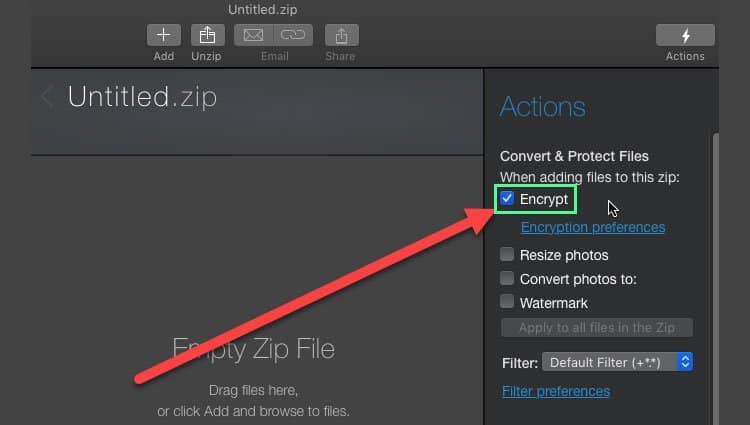

#Mac zip with password command line full#
It even works as a filter.ħz doesn't create archives with full filesystem information on UNIX, so you'd need to use tar before using 7z (but since 7z stores other information about the tar file, I'd recommend using xz, as it is designed for it): tar cf - file1 file2 dir | 7za z -si archive.tar. Xz is a UNIX tool, that uses LZMA2 for compression, but works the way gz, bz2, etc works. Select the Search Icon in the upper right corner. Place the Files you wish to Zip within the folder. If you really wanted, you could use the zip -e command in a Terminal on a Mac. However, like the password-protection feature built into Windows XP, it uses the old and insecure standard zip encryption scheme.
#Mac zip with password command line mac os x#
If you want to use the same compression algorithm with your tarballs, use the -J switch with tar: tar cJf file1 file2 dir Instructions for using the Terminal to create password protected zip files in Mac. The zip command included with Mac OS X does offer a way to encrypt zip files without using any third-party software. I recommend this method in case Windows users can't open 7z archives (in case you want to advice a tool for that: PeaZip). It can also create self-extracting archives with the -sfx switch: 7za a -sfx archive.exe files1 file2 dir Usually in the package p7zip, you'll get the 7z and 7za command, with which you can create your own 7z archives.ħza can also decompress standard ( pkzip) zip archives (and create them as well with the -tzip switch).Ĭompressing: 7za a archive.7z file1 file2 directory/

Well, when it comes to distributing files for a variety of operating systems, I'd recommend 7-zip.


 0 kommentar(er)
0 kommentar(er)
